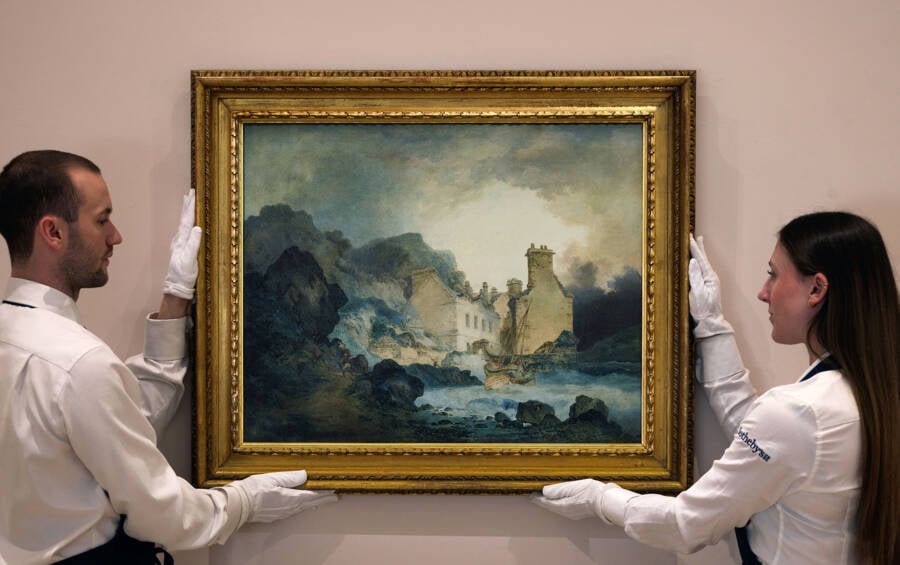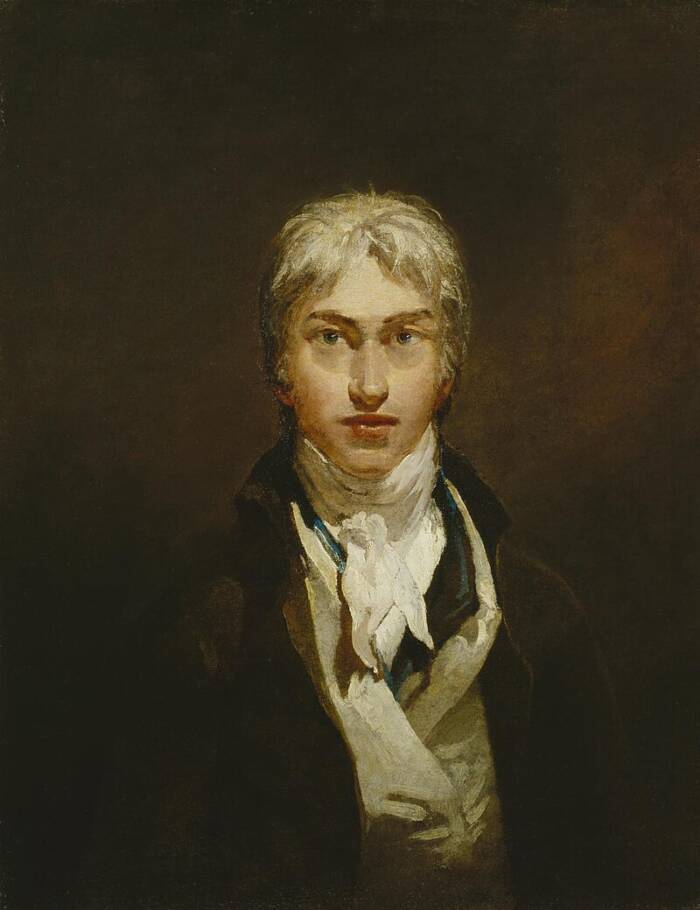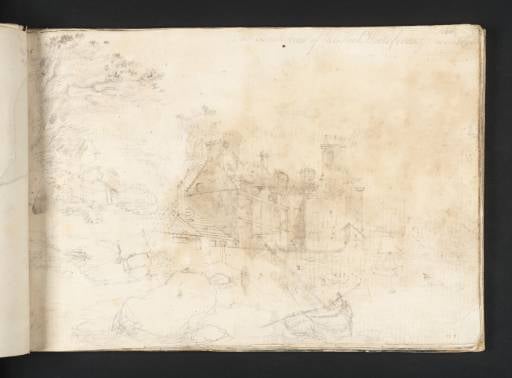Now correctly identified as "The Rising Squall," this 1792 masterpiece is not only remarkable as a rediscovered Turner, but as the very first oil painting he ever exhibited.

Sotheby’sUntil 2024, the painting was wrongly believed to be the work of an unknown artist — until the discovery of J.M.W. Turner’s signature.
The earliest painting to ever be exhibited by Joseph Mallord William Turner, better known as J.M.W. Turner, was long known to be “Fishermen at Sea” in 1796. However, a new discovery has just upended this narrative.
A recently rediscovered painting, “The Rising Squall, Hot Wells, from St Vincent’s Rock, Bristol”, is now believed to have been created by Turner when he was 17 years old and exhibited in 1792. It will now be on display at Sotheby’s in London from June 28 until July 1. Afterward, it will be headed to auction, where it is estimated to sell for somewhere between $270,000 and $400,000.
This is a far larger figure than the painting was sold for in just 2024, before it was discovered to be the work of Turner. Then thought to have been the work of an unknown artist, the painting sold at auction for a mere $506.
How J.M.W. Turner’s “The Rising Squall” Fell Into Obscurity Before Being Rediscovered

Sotheby’sThe rediscovered Turner will be on display at Sotheby’s in London from June 28 until July 1, before going to auction.
Though it’s now been authenticated as a work of Turner’s, the story surrounding the painting was much different only a year ago. Julian Gascoigne, a senior director at Sotheby’s, told The Guardian that, last year, the painting was “very dirty, it hadn’t been touched for a long period of time, it had very old discoloured yellow varnish on it.”
But how did the work of a revered master end up falling into anonymity and disrepair in the first place?
After the painting was finished and exhibited in the Royal Academy in 1792, its long and complicated odyssey to Sotheby’s began.
“A series of mistakes were made, which were repeated and compounded,” Gascoigne said. “Over the course of the 20th century, it was forgotten.”
Reverend Robert Nixon first purchased the painting immediately following its initial exhibition. Nixon was one of Turner’s early supporters – as well as a client of Turner’s father, who was a barber.
After Nixon died in 1837, he passed it on to his son, Francis Russell Nixon. That’s when the painting made it to Australia, as the younger Nixon was named Lord Bishop of Tasmania.

Wikimedia Commons A self-portrait of artist J.M.W. Turner from 1799.
From there, the painting’s journey is foggy. The next time the painting was up for auction was 1864. By this point, scholars mistakenly identified both the location of the landscape depicted in the painting, as well as its medium.
Following the 1864 auction, it was believed to be a watercolor painting depicting Rochester Castle. Somewhere along the line, the attribution to Turner was also lost.
It wasn’t until the painting was cleaned last year that Turner’s signature was rediscovered on the lower left corner of the canvas. After a thorough examination, the work was determined to be a genuine Turner painting.
“We are as certain as it’s possible to be that this painting is by Turner,” Gascoigne said.
A Young J.M.W. Turner’s Early Works And How They Hint At His Later Career
“The Rising Squall” depicts the landscape surrounding the Hot Wells House along the Avon River in Bristol. Turner first sketched this hot spring and spa in 1791 during a tour of the West Country.
The sketch would inspire a watercolor painting that served as the basis for Turner’s newly-rediscovered oil painting, his final take on this striking scene. In this version, the sea is wilder and the sky is more dramatic, all thanks to Turner’s unique painting technique.

Tate GalleryThe sketch that Turner made after his visit to the Hot Wells House, which served as the basis for “The Rising Squall.”
Turner’s revolutionary technique involved layering the work with thin strokes of oil paints, a method he returned to later on in his career.
“It gives us a real insight into the ambition that Turner was clearly exhibiting at this early stage of his career, and shows a level of competency in oil painting, which is quite a technical medium,” Gascoigne explained. “It changes a lot of what we know, or thought we knew, about Turner’s early work and our understanding of how his technique and style evolved.”
What’s more, “The Rising Squall” isn’t the only lost Turner masterwork to be rediscovered in recent years. In early 2025, it was announced that a supposed John Ruskin piece submitted to an online appraisal service was actually a forgotten Turner watercolor. And in 2024, a watercolor bought by a family in England in 1990 was found to be a lost Turner from 1795.
After reading about this rediscovered J.M.W. Turner painting, discover the story of the long-lost Frans Post painting found in a barn attic. Then, learn about the lost Van Dyck painting that was found in a shed.





